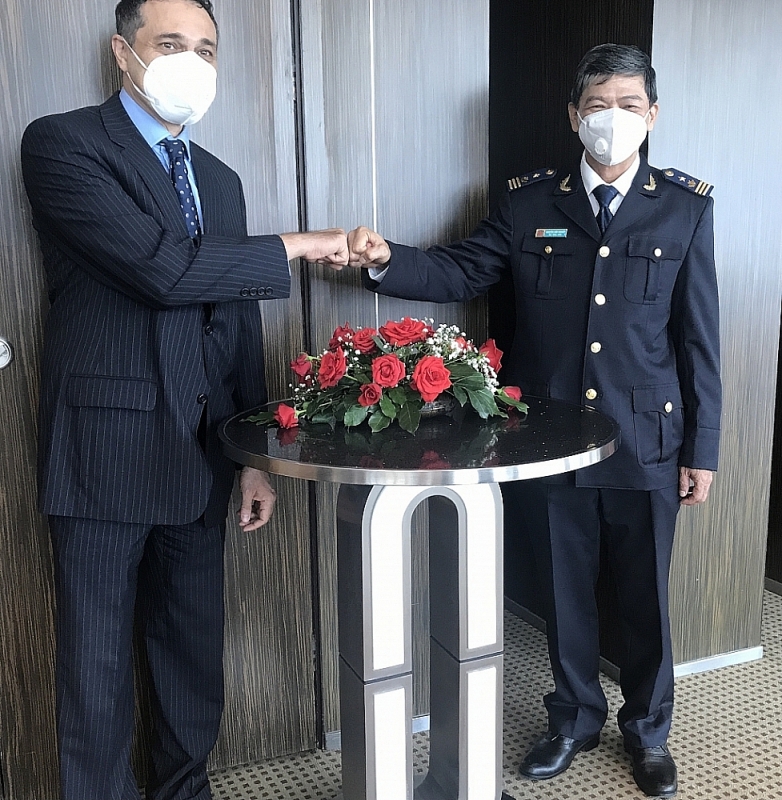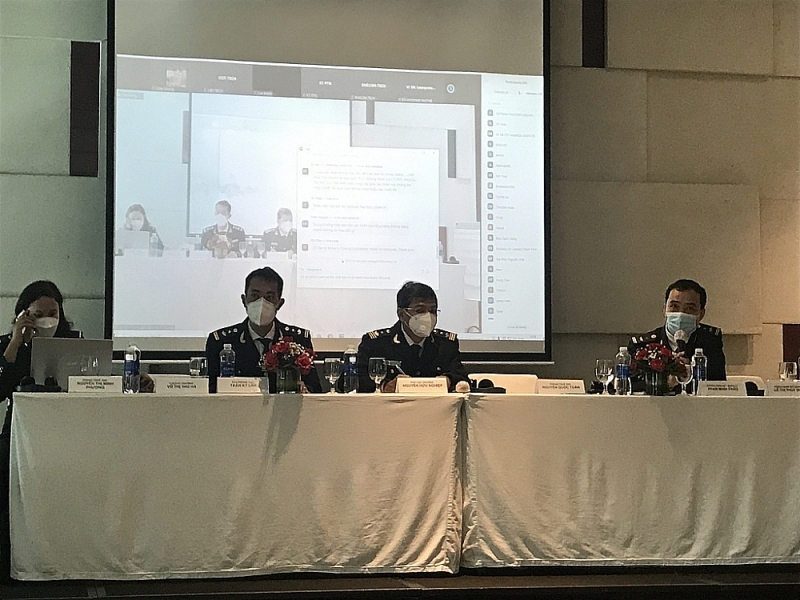 |
| Consul General of Canada in HCM City and Deputy Director of HCM City Customs Department pledge to support businesses to recover after the pandemic. Photo: T.H |
Import and export goods increase
Mr. Behzad Babakhanic, Consul General of Canada in Ho Chi Minh City said that, in promoting the economic strengths between the two countries, businesses of the two countries were now taking advantage of the CPTPP. The average import – export turnover between Vietnam and Canada was about $9 billion/year. In particular, exporting mainly from Vietnam to Canada, while exports from Canada to Vietnam only reach $700 million. Canada’s meat exports to Vietnam were currently at $100 million, 3 times higher, and seafood was $50 million. Vietnam is Canada’s largest export market in the ASEAN region.
Mr. Behzad Babakhanic assessed that the post-pandemic economic recovery and development between two countries had a great contribution from Customs authorities. The role of Customs was very large in the trade of import and export goods between the two countries.
“Especially, during the recent outbreak, Ho Chi Minh City Customs Department has had many programs to support businesses to maintain clearance of import and export goods,” the Consul General of Canada said.
Speaking about the advantages of the CPTPP for businesses of the two countries, Mrs. Lisa Mallin, Trade Policy Officer, Embassy of Canada in Tokyo-Japan, said that the CPTPP had created many advantages for Canadian and Vietnamese businesses, Canadian consumers had accessed services and goods at reasonable prices.
CPTPP had helped increase export agricultural products. For example, wheat, soybeans, meat and many other Canadian products exported to Vietnam increased very quickly. For example, meat exports had grown very rapidly, with sales of CA$11 million from 2018 increasing to CA$38 million in 2020; beef products increased by 400%; pork increased by 150%.
However, in a survey of 500 Canadian businesses, up to 93% of businesses did not know or know very little about the CPTPP. So this webinar would help businesses to have a better understanding of this agreement.
Instructions on many procedures for businesses
During the webinar, Ho Chi Minh City Customs Department answered questions from Canadian businesses related to customs procedures for importing a number of items such as: oats, fresh ginseng; specialized inspection for some food items; certificate of origin; and preferential tariff rates for some imported goods.
 |
| Ho Chi Minh City Customs Department answered many questions for businesses. Photo: T.H |
Answering questions about importing many shipments in a period (normally one year) and identical items, whether it needs an invoice number for each shipment or not, Deputy Head of Supervision and Control Division Phan Minh Thao said, based on Clause 5, Article 7a of Circular 38/2018/TT-BTC dated April 20, 2018 amended and supplemented in Clause 4, Article 1, Circular 62/2019/TT- BTC dated September 5, 2019, Customs procedures apply to cases where proof of origin documents are issued for many identical shipments that are imported many times within the time limit specified in the certificates of origin prescribed at Point a.8, Clause 3, Article 1.
For example, customs procedures for the case where the certificate of origin does not specify the number of imported goods. When carrying out procedures for the first import shipment of the certificate of origin issued for many identical shipments, the customs declarant shall submit one original copy of the certificate of origin to the customs authority.
The customs authority will compare the conformity between the import customs declaration with the proof of origin of goods and documents included in the customs dossier. If it meets the rules of origin as prescribed, it will be subject to apply the preferential tariff rate.
For subsequent import shipments, the declarant shall declare in the box “Notes” of the import customs declaration about the number of the first import declaration which are applied proof of origin as prescribed at Point a. a.8, Clause 3, Article 1. Furthermore, importing fresh ginseng must carry out food safety inspections at the Ministry of Health and quarantine at the Ministry of Agriculture and Rural Development.
At the webinar, regarding some questions of enterprises about specialized inspection, Deputy Director General Nguyen Huu Nghiep said that currently, the Draft Decree stipulates the management mechanism, methods, order and procedures of quality inspection and food safety inspection procedures for imported goods that are being submitted to the Prime Minister by the Ministry of Finance.
With the assigned role as the focal point, the Customs authority will apply information technology and risk management in performing specialized inspection, there will be fundamental changes compared to the past. When the decree is issued, the customs authority will give specific instructions for businesses. Enterprises should proactively take steps before the goods arrive at the port, meaning imported goods will be cleared quickly.
